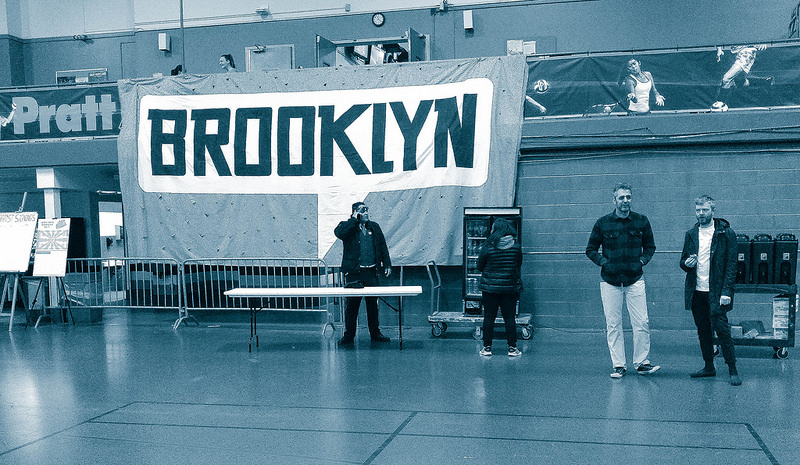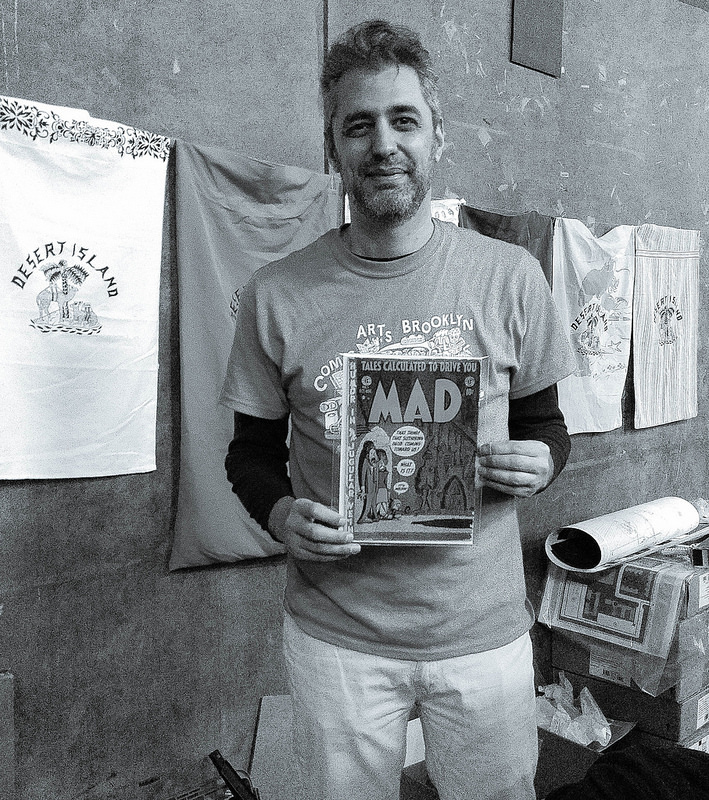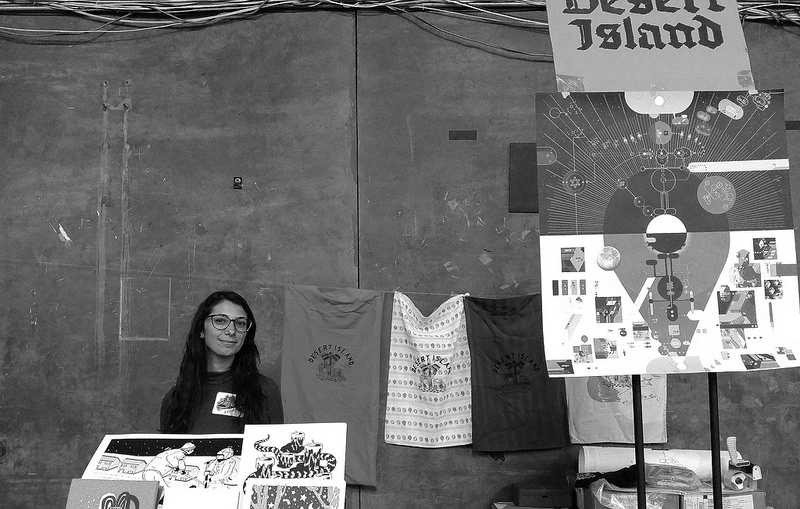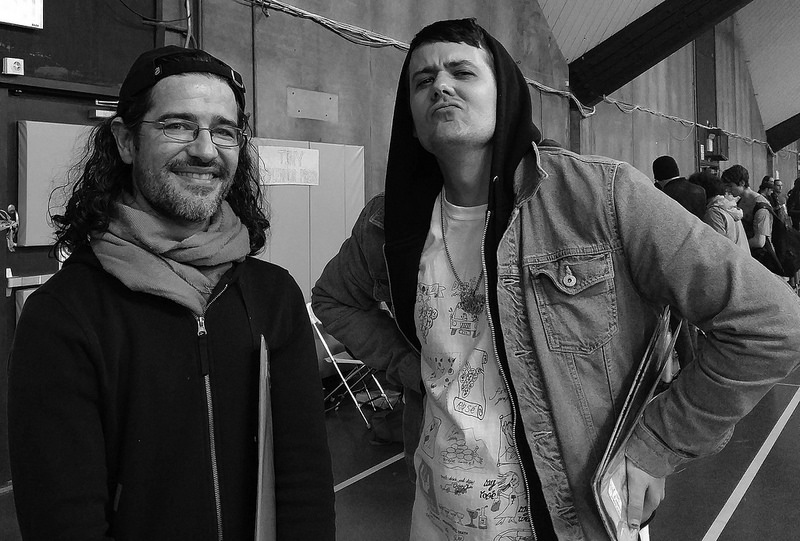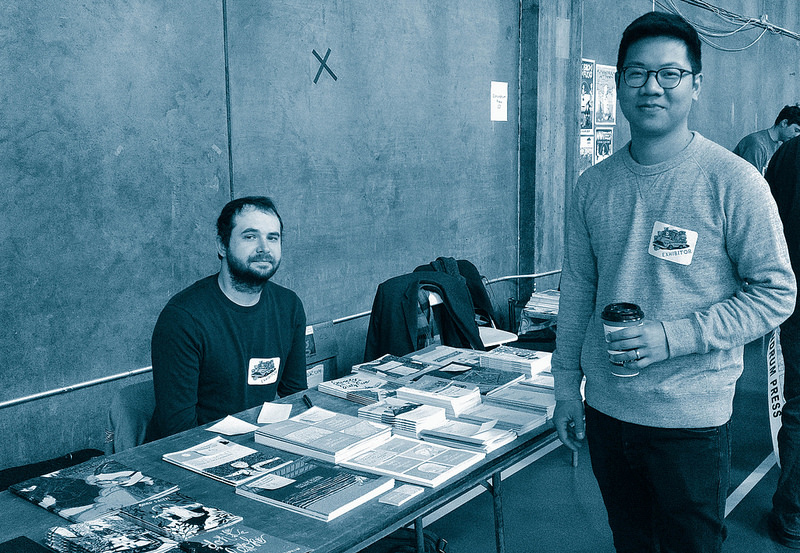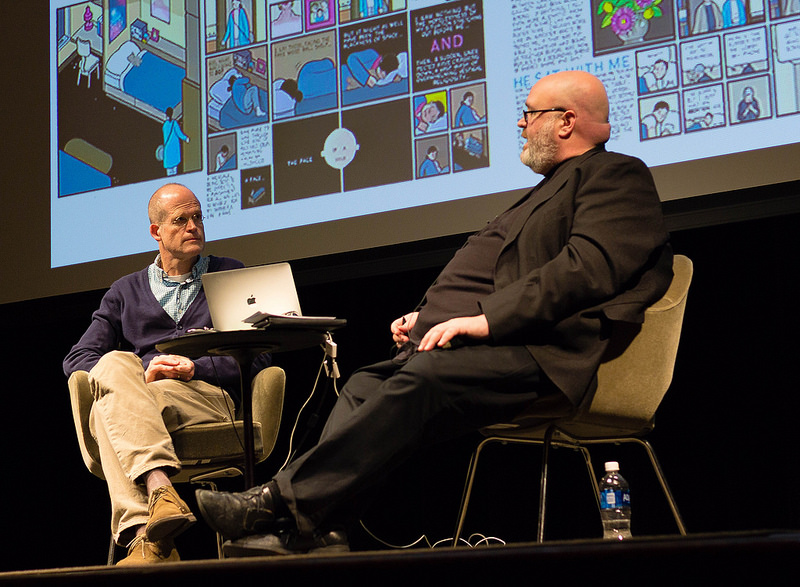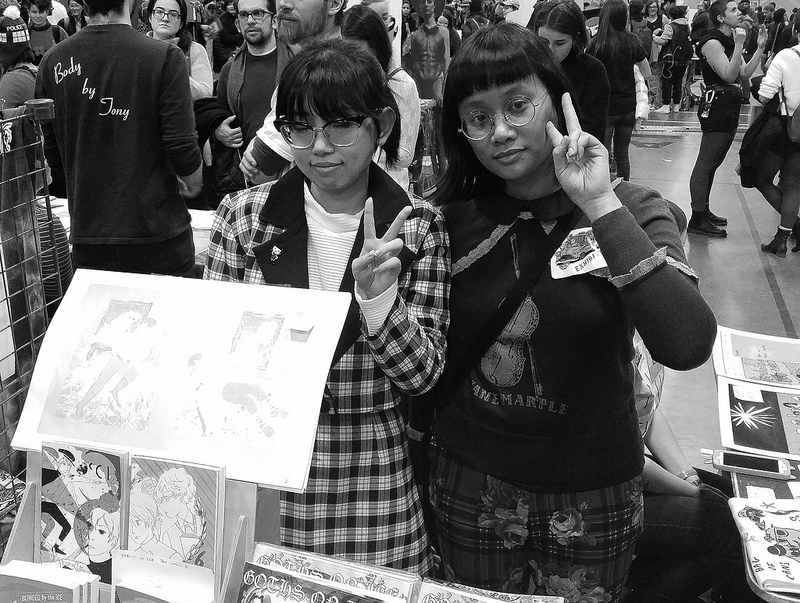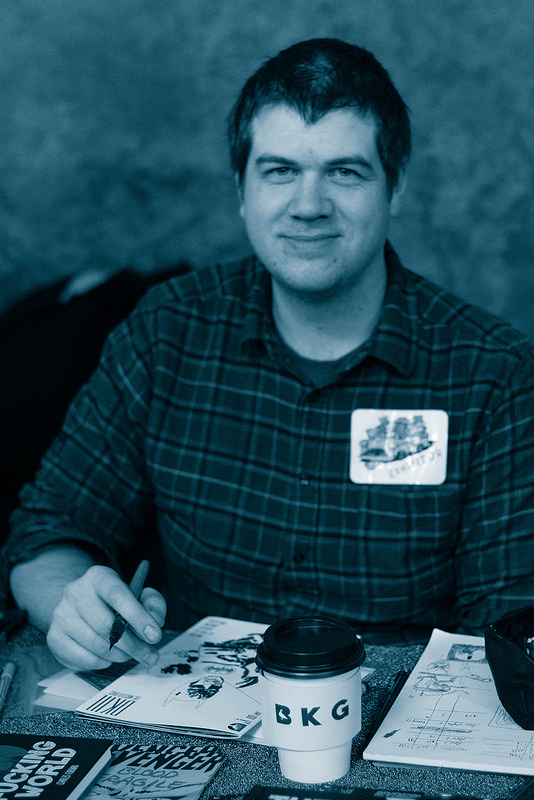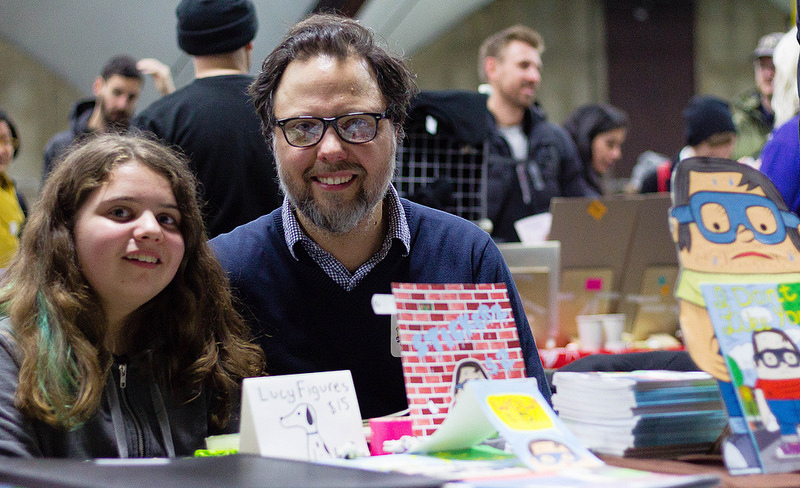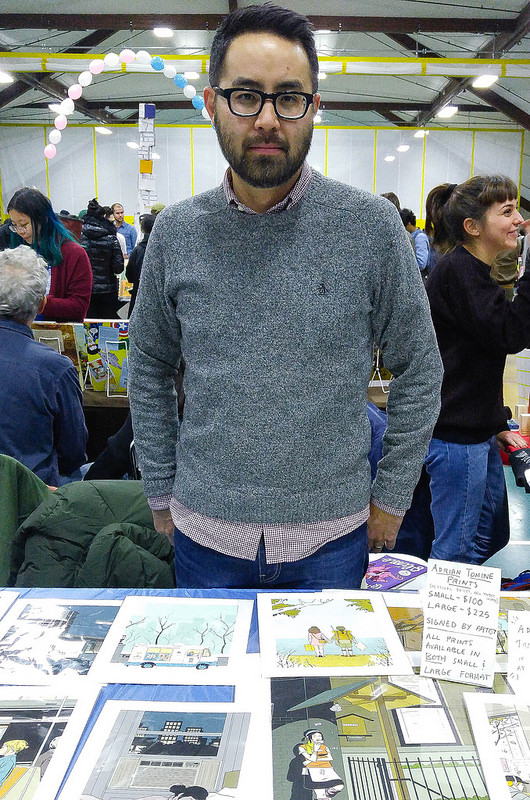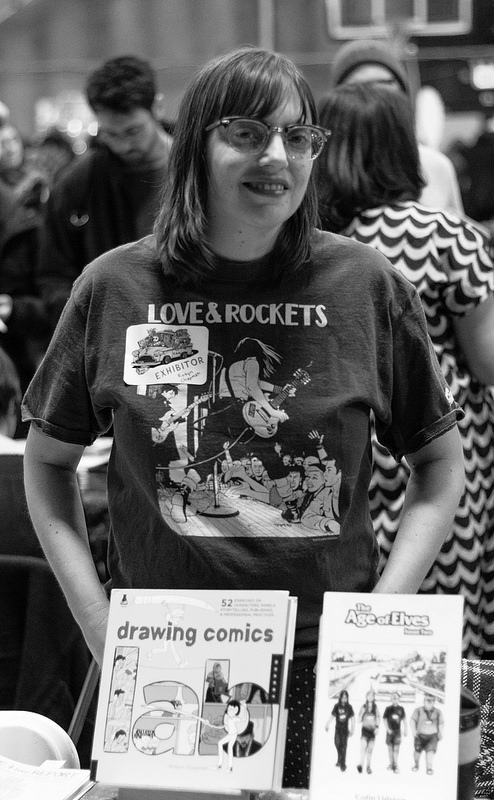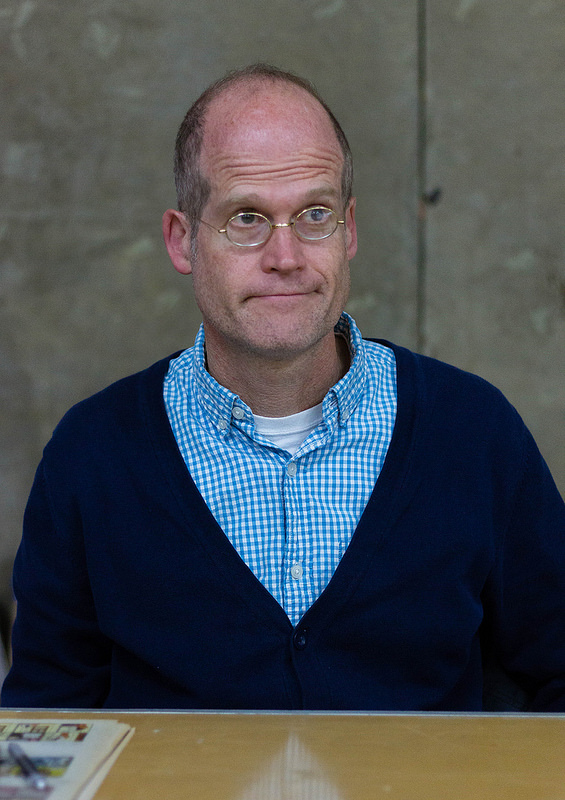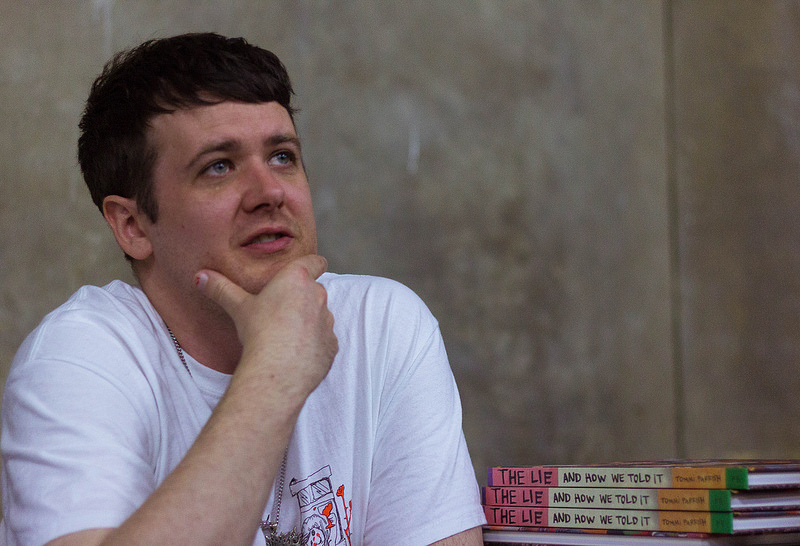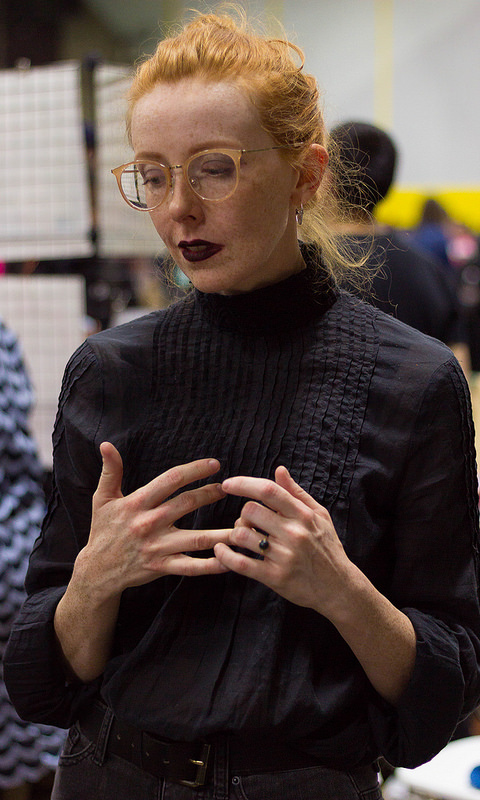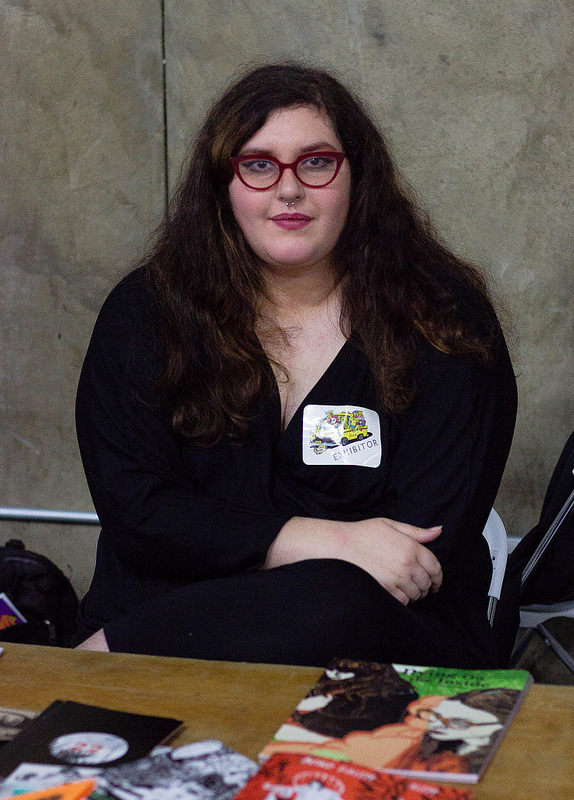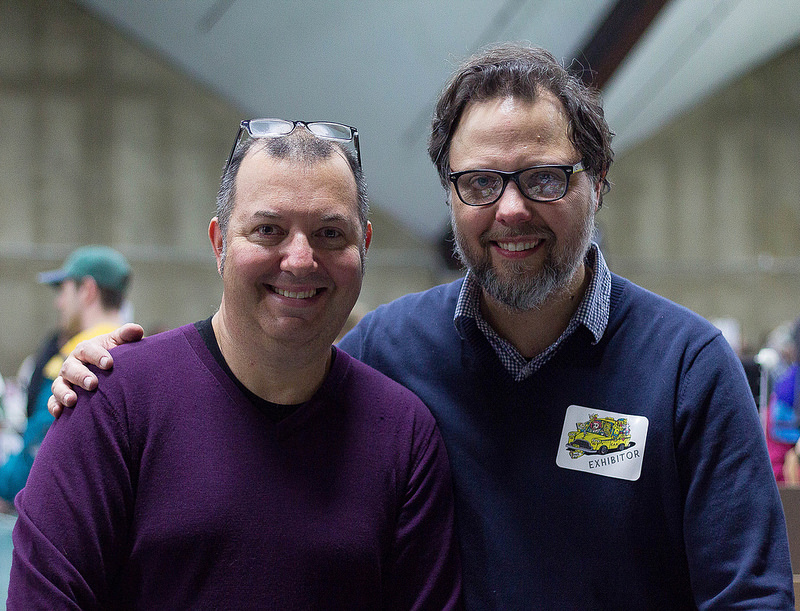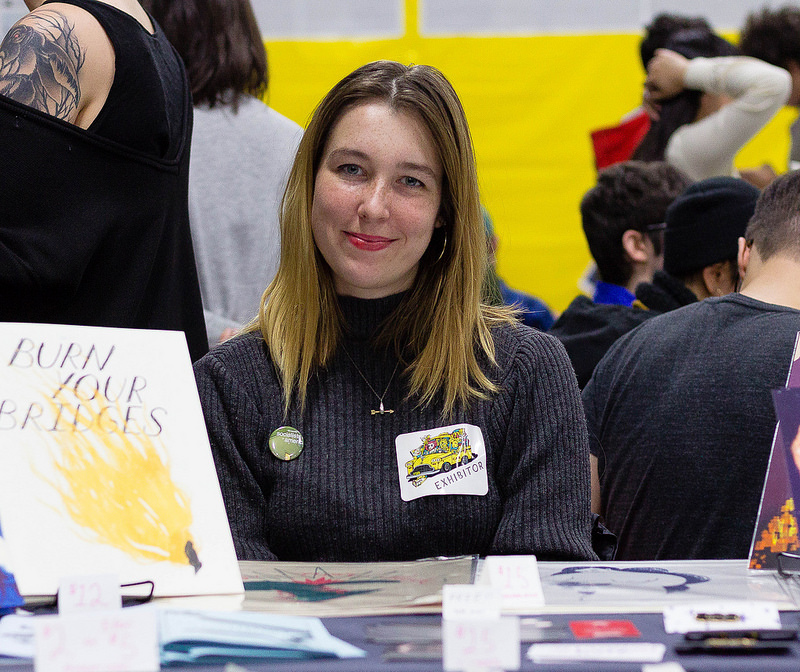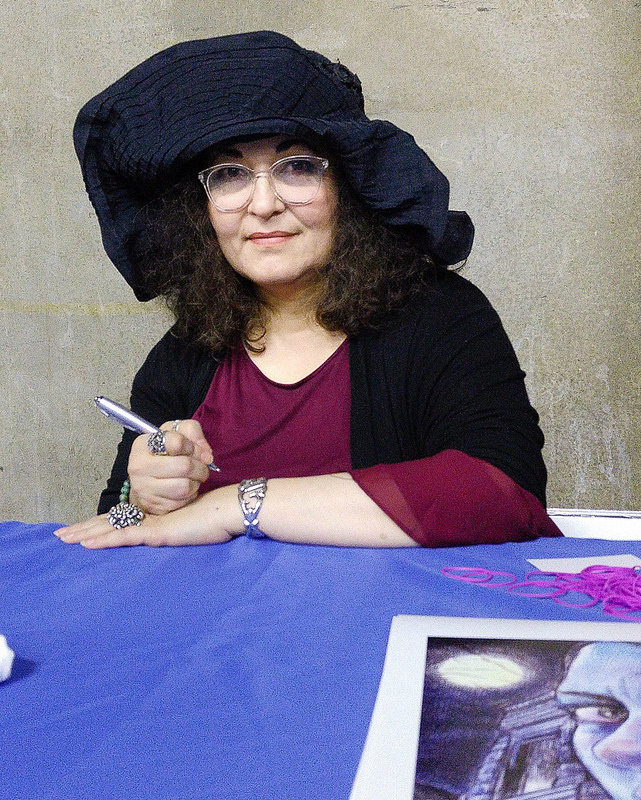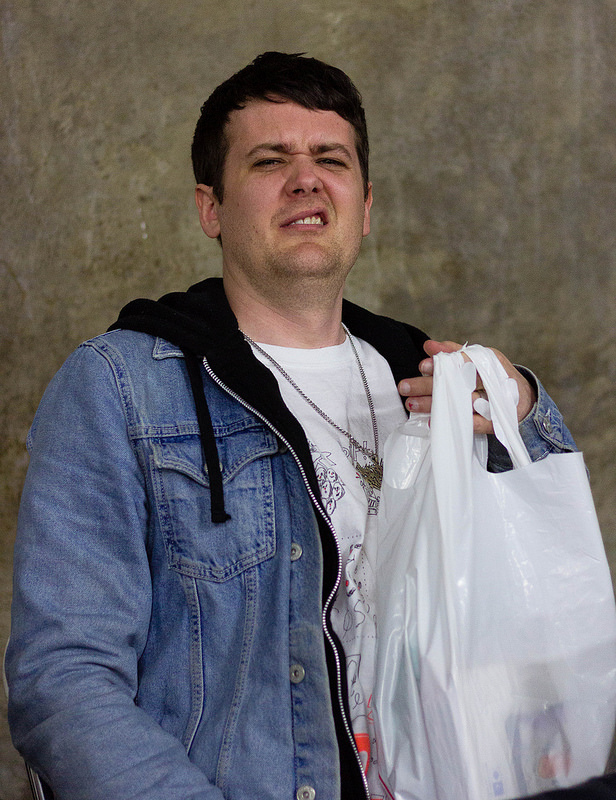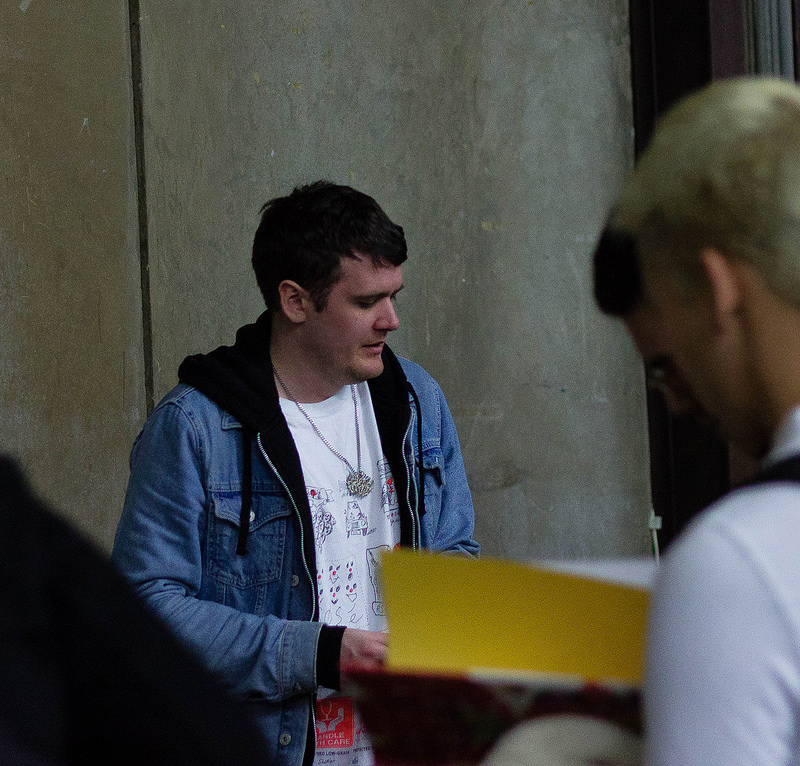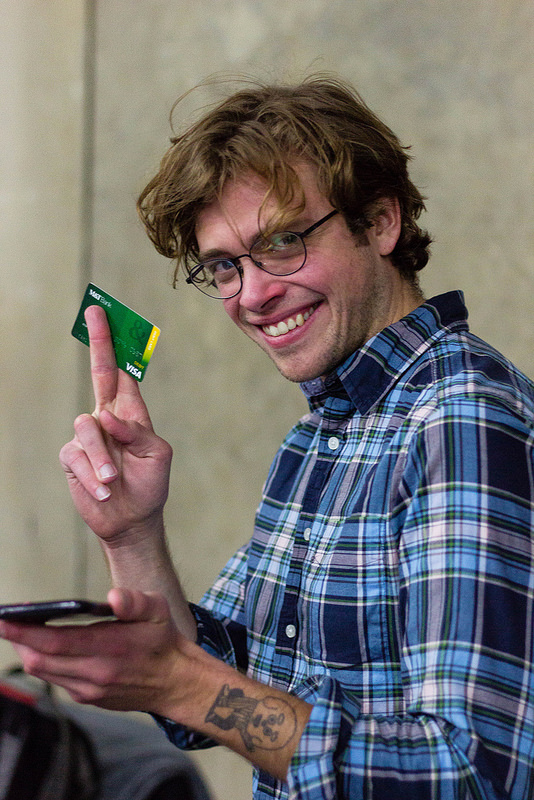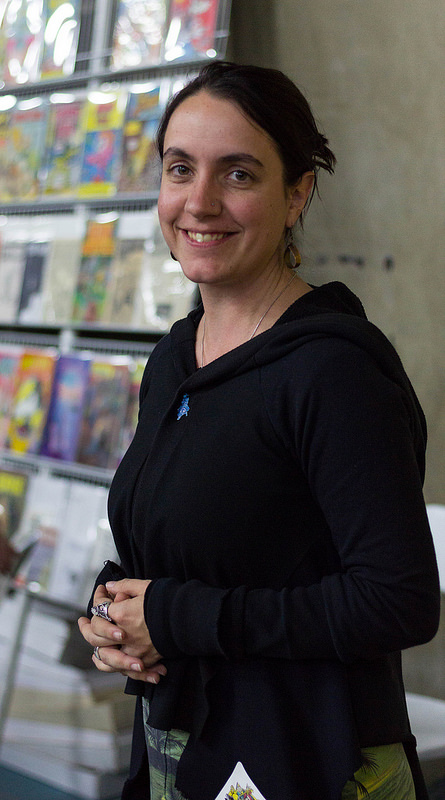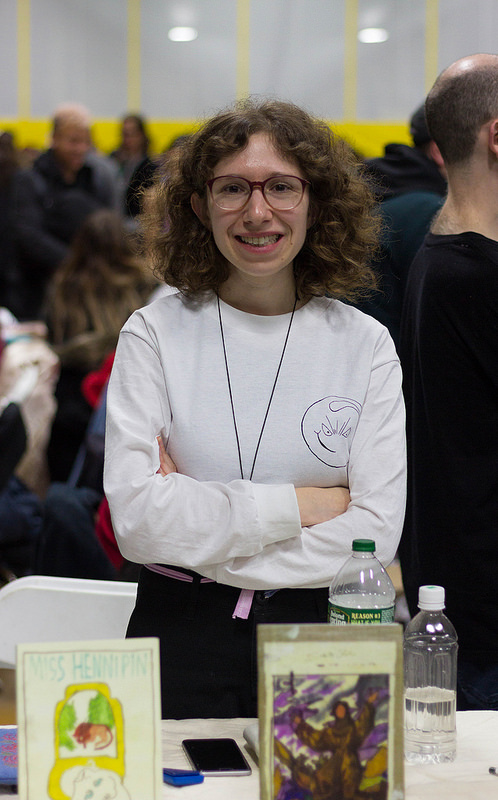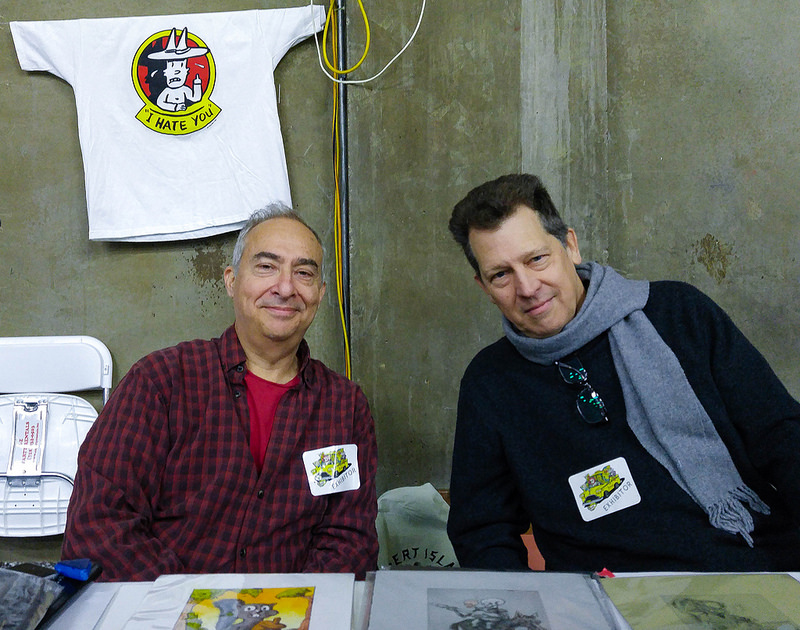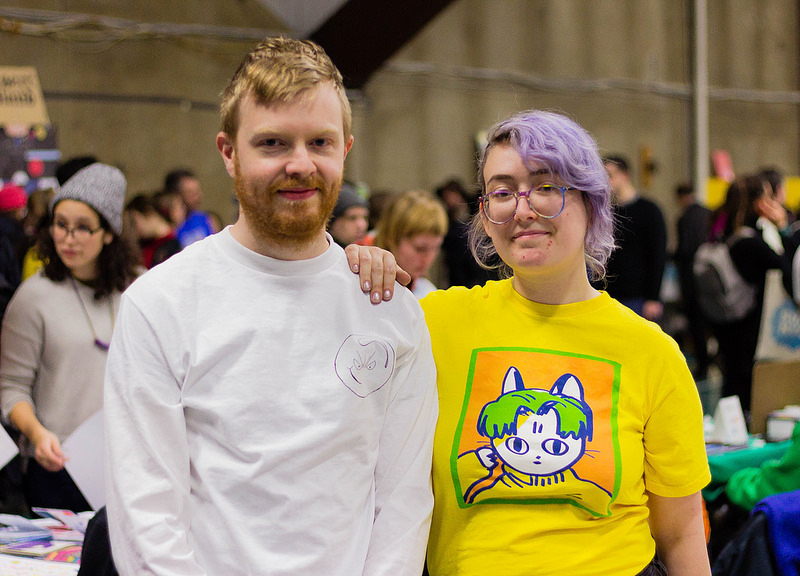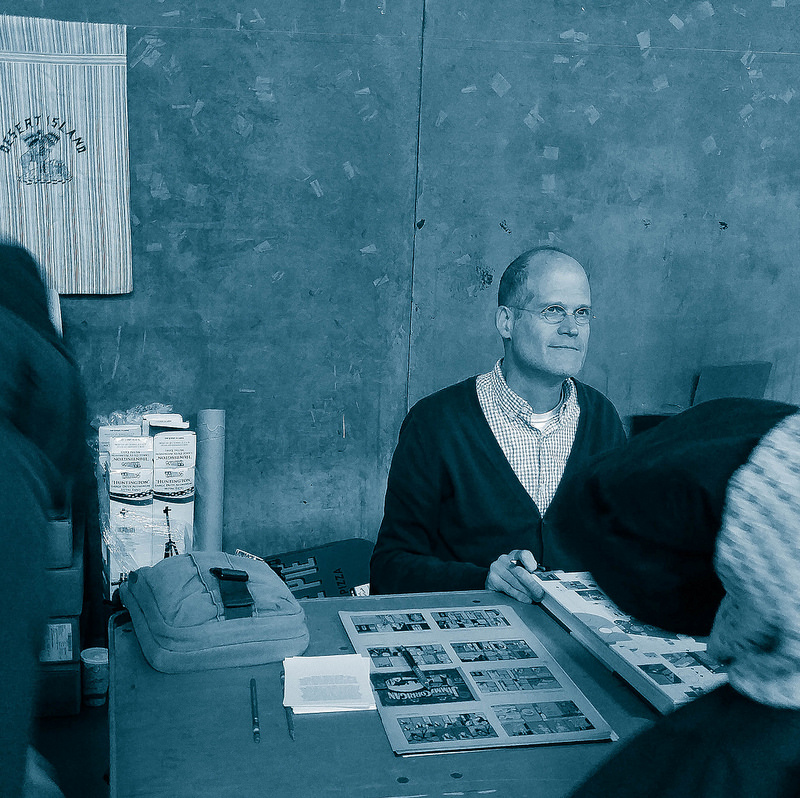Aaron CockleFebruary 13, 2018NewsAaron here today with Charlotte Salomon: Life? or Theatre?; 3 Comics from Ben Katchor; Tommi Parrish; Adrian Tomine covers TEOTFW; 1987; 24 Frames
—————————————————————————————————
Life? or Theatre?
At The New York Review of Books, Lisa Appignanesi looks at work by Charlotte Salomon, including a current exhibition at the Jewish Historical Museum in Amsterdam.
All of the images and text in Life? or Theatre? are painted in three colors: red, yellow, and blue. Salomon blends these into brightly radiant or deadly somber hues. Whether this restricted palette was a deliberate choice or an accident of impoverished circumstances, we will never know. What is clear, however, is that with this paucity of means, the twenty-three-year-old Charlotte created a hybrid work of startling artistic innovation, at once a book, a storyboard for a silent film with indicated musical accompaniment (though sometimes a talkie complete with long shots and close-ups), and a powerful graphic novel decades ahead of its time, incorporating some of the stunning poster-art techniques of Weimar Germany.
—————————————————————————————————
An Evening Demonstration. / Hi & Dri in Connecticut / At The Old Unh-Unh Factory
Ben Katchor has been posting some comics here, and Oliver Lee Bateman interviewed him over at the Pacific Standard blog.
“To be a cartoonist now, in this world, with the costs it imposes on you? Well, it certainly isn’t easy, because this is as bad as I can recall things having been,” he says. “When I was developing my interest in cartoon art, I was enrolled in college studying painting and literature. But I loved this idea of the mass reproduction of artwork that could live on a rack near a candy stand, and I didn’t have nearly that same passion for the world of galleries and high modernist art. And fortunately, when I started working on these projects, the old New York City in which I lived was so astonishingly cheap. Rent, in my case, amounted to $200 a month, and if I sold a strip a week for somewhere between $25 and $100, I could squeeze by. This way of working was possible then.”
—————————————————————————————————
The Lie and How We Told It
At The Comics Journal, Rachel Davies talks with Tommi Parrish.
On that note about bookmaking, I was so shocked when I first got The Lie in the mail because of its size ‘cause Perfect Hair is almost like a pocket book, or something you can easily slip into a bag. I wanted to know if when you’re making the drawings, you’re thinking about how it’s going to look physically.
I try to! It’s a really important part of how the story feels, how the object feels in your hand. Ideally I’d like it all to be one of the same. I don’t know if everyone’s the same with this, but it really affects the way that I feel about a piece of writing, if I feel like the vehicle for it is clunky and ugly. I don’t know, making something that’s strange and beautiful, and also trying to make the contents of the book pretty, but also engaging. I want it to all be like… all of it as an object, I guess. I don’t know, I was really unhappy with how Perfect Hair looked.
I really like it!
It was a fun book.
I really like, I don’t know the technical term, but how it has the reflective title.
The spot gloss! It’s all about the spot gloss.
—————————————————————————————————
TEOTFW
Emily Nussbaum on the Netflix adaptation of Charles Forsman’s The End of the Fucking World.
Instead, “The End of the F***ing World”—which is written by Charlie Covell, adapted from Charles Forsman’s graphic novel, and directed by Jonathan Entwistle and Lucy Tcherniak—evolves into something much rarer, a convincing teen-age romance. At once a joyful watch and a morally destabilizing one, it bears some relationship to “Fleabag,” another dark British comedy driven by the narration of a deeply screwed-up individual, plotted so that its more compassionate themes come as a pleasant shock. Luckily, in an age of TV overkill, the show doesn’t take long to get there: it is only eight episodes long; each is twenty minutes.
—————————————————————————————————
1987: Drawings by John Ruggeri
In 1981, five young men were diagnosed with a rare lung infection. At the same time, numerous gay men in New York and Los Angeles were being diagnosed with an aggressive cancer, Kaposi Sarcoma. These illnesses would soon be understood as being caused by an immuno-suppressing virus, HIV. By the end of 1987, the World Health Organization estimated that up to 10 million people were living with HIV worldwide. This exhibition is titled “1987,” the year that the antiretroviral drug AZT was made available to help combat the plague. By 1999 an estimated 33 million people were living with HIV and 14 million people had died of AIDS. Today, approximately 36.7 million people are living with HIV.
BFA Visual & Critical Studies proudly presents “1987: Drawings by John Ruggeri” (1973 Illustration, BFA 1984 Media Arts, MFA 1986 Illustration as Visual Essay), an exhibition of approximately 80 drawings made between 1984 and 1987 that document the devastating early years of the AIDS crisis in New York City. The work, all charcoal drawings on Strathmore spiral-bound paper, were done in the bars, bathhouses, hospitals, prisons and public spaces of New York City and poignantly capture the anxiety etched onto the city and particularly to its often marginalized denizens.
School of Visual Arts, 133/141 West 21st Street, through February 28.
—————————————————————————————————
Abbas Kiarostami / 24 Frames
At Film Comment, Imogen Sara Smith on Abbas Kiarostami’s final film.
Photography shows us things invisible to the naked eye, whether it is the moment when a galloping horse takes all four feet off the ground, or a murder in a public park, or just a facial expression too fleeting to catch. When Kiarostami took the original photographs, he was presumably trying to capture something in the world: the hunting motif, from the Brueghel painting through the animals being shot, might also be a metaphor for photography itself. By digitally elaborating on these images, it seems he is trying to paint something seen in his mind’s eye, a memory or an imagined scene. This mixing of the real and the unreal is summed up in that final image: a photograph of a film, or rather a film of a photograph of a film, suspended between stillness and motion, between watching and dreaming.
—————————————————————————————————
Joanie and Jordie – 02-13-18 – Caleb Orecchio
—————————————————————————————————
Vision Box – 2-13-2018 – by Cameron Arthur
Share this page: [...]

